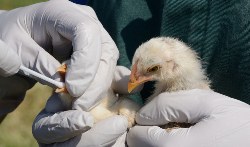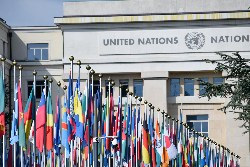SRB: A Fair Go for Pacific Women Role Models
Pasifika Women: Our stories in New Zealand, by Sandra
Kailahi
Reed, 2007, $35. Reviewed by JULIE
MIDDLETON Scoop Review of
Books
PASIFIKA women are the backbones of
their communities in the islands and in New Zealand. But so
often, in New Zealand as in their homelands, their
contributions and opinions have been invisible or
under-documented.
Part of this is the good old gender hierarchy that can act to confer lesser status on Pacific women than Pacific men; part of it is the self-effacement of Pacific women. Another part is a Palagi-centred media, and a publishing industry which has been slow to understand the value of such a book and the potential size of its market.
The 2006 Census told us that 265,974 people identified with the Pacific peoples ethnic group - 6.9 percent of the total New Zealand population. They need to see more of themselves and their role models—as does the rest of New Zealand.
This book, then, is welcome. The author, New Zealand-born television journalist Sandra Kailahi, who describes herself as being of Tongan and New Zealand descent, is a Fair Go staffer who formerly worked for Tagata Pasifika. This is her first book.
With the assistance of a $3000 Creative New Zealand grant, the Aucklander has profiled 20 Pasifika women with public status, and in doing so goes a good way towards documenting Pacific women’s contribution to New Zealand life.
Her subjects range from the well-known, such as Minister of Pacific Affairs Luamanuvao Winnie Laban, to less high-profile women such as Tofilau Esther Tofilau, the world’s only Pacific Island woman bodybuilding judge.1 Some of them have always had New Zealand passports; some migrated.
Their first-person, often candid accounts roam from childhood to the present, from the private sphere to public life, and place emphasis on the input of parents and wider family - Kailahi identifies parents and village links at the top of each chapter.
The interviewees outline how
they attained their success, and between them highlight and
comment on a range of important issues affecting Pacific
women here and in the islands.
These include practical
and cultural issues adapting to different ways of life; the
low numbers of
Pacific women in decision-making; the
influence of religion; racism; gender equality and the roles
of men and women; maintaining cultural traditions far from
home, and how notions of status in Pacific society affects
the way people communicate.
This book’s orientation towards achievers makes it something of a de facto primer on how to succeed, and this is reinforced by the separate boxing of a pithy quote as well as a piece of advice. Here is Ali’itasi Foleni Dutt, New Zealand’s top heavyweight boxer: ‘I know some people think I shouldn’t be boxing because it’s wrong for women, let alone a Samoan woman, to box. I feel sorry for them and my heart goes out to them …they can’t see out of the box they are living in. If only they could see what they can achieve and not what they can’t.’
There are also rare chances to find out about those whose public lives require distance—for example, Judge Ida Malosi, like all judges, keeps a low public profile so getting her into this book is a coup for Kailahi.
That said, the book does not take a rigorously journalistic approach. The questions Kailahi has posed can only be surmised, and she has avoided some of the obvious (and tough) ones. The problem with this first-person biographical take without third-person commentary to fill the gaps allows any moa in the room to be skirted, and this tends to leave the reader with the frustrating sense that the picture is incomplete.
You can infer that Kailahi has had to draw a delicate balance between reader interest in the complete story and the subject’s right not to unearth painful memories—or be put in a position where they might refuse to participate.
For example, Judge Malosi discusses her happy marriage (‘so in love after 25 years’) without naming her husband. He is former senior sergeant Anthony Solomona, whose assault conviction in 2005 led to an inquiry into so-called ‘sick’ police culture. (Solomona was also the person about whom disgraced Herald on Sunday journalist John Manukia fabricated interviews the same year).
A journalistic approach would have ensured that these facts were acknowledged, even briefly, and, ideally, would have encouraged some explanation of how Judge Malosi dealt with the upheaval the issues must have caused. In another example, the fascinating and candid Rev Feiloaigamatausala Janette Taule’ale’ausumai—who talks bravely and openly about her experience of mental ill-health—talks subsequently about ‘some bad experiences I had endured when I was a young woman in the church’ which caused her ‘flashbacks’ and ‘trauma’. She says that those experiences and her ill-health are linked—and that she is ‘fine now’ —but there is no indication as to whether the author of these experiences has been dealt with. I finished her story worrying that maybe something remained unresolved.
On the publishing side, Reed’s editors have been disappointingly sloppy, allowing all sorts of spelling, grammatical and factual errors to make it to print. This undermines the book’s credibility and that of Reed. (It is, however, not the only publisher that can plead guilty here; half-hearted editing seems to have become a trend in New Zealand.)
For example, Matafetu Togakilo Smith, a weaver, talks about going to the 1999 South Pacific Arts Festival in Noumea. The festival was actually in 2000 (it happens every four years) and its proper name is the Festival of Pacific Arts.
In the next sentence, someone talks about the Northern Territories in Australia (should be Territory). Someone has a ’breach baby’, and another talks about setting ‘precedence’. The images in the book are black-and-white portraits by Elam graduate Eimi Tamua— the key here has been strong and simple settings—and family photos. The book also includes a short but useful glossary of common words in Maori and Pacific Island languages used throughout the book.
Overall, Pasifika Women is an interesting, personable and valuable documentation of the achievements of New Zealand’s high-achieving Pacific women. The hope now is that it is widely read.
Note
1. Hon. Luamanuvao
Winnie Laban, MP; Mihi Joy Wells, amateur body board champ;
Matafetu Togakilo Smith, weaver; Soana Pamaka, principal;
Rev. Feiloaigamatausala Janette Taule‘ale‘ausumai,
minister; Luisa Avaiki, rugby league player; Faaniniva
Tapaau Faasisina Faapopoo Retimanu, radio newsreader; Mere
Tapaeru Tereora, community activist; Frances Campbell, local
body councilor; Ida Marie Malosi, judge; Ali‘itasi Foleni
Dutt, heavyweight boxer; Debbie Ryan, doctor; Fanaura
Kimiora Kingstone, human rights worker; Penita Davies,
karate champion; Ali‘imuamua Sandra Alofivae, lawyer; Lily
Aitui Laita, artist and teacher; Tofilau Esther Tofilau,
bodybuilding judge; Emeline Afeaki-Mafile‘o, social policy
strategist; Lino Nelisi, children’s author; Linda
Tuumuliga Vagana, former national
netballer.
JULIE MIDDLETON is an Auckland journalist and former advocacy and communications officer for the Human Development Programme at the Secretariat of the Pacific Community, Noumea.
The above review first appeared in the Pacific Journalism Review.
Copyright Creative Commons


 Gordon Campbell: On bird flu, AUKUS entry fees and Cindy Lee
Gordon Campbell: On bird flu, AUKUS entry fees and Cindy Lee Binoy Kampmark: Israel’s Anti-UNRWA Campaign Falls Flat
Binoy Kampmark: Israel’s Anti-UNRWA Campaign Falls Flat Peter Dunne: Luxon Gets Out His Butcher's Knife - Briefly
Peter Dunne: Luxon Gets Out His Butcher's Knife - Briefly Binoy Kampmark: Warring Against Encryption, Australia Is Coming For Your Communications
Binoy Kampmark: Warring Against Encryption, Australia Is Coming For Your Communications Gordon Campbell: On Fast Track Powers, Media Woes And The Tiktok Ban
Gordon Campbell: On Fast Track Powers, Media Woes And The Tiktok Ban Binoy Kampmark: Censorship Wars, Elon Musk, Safety Commissioners And Violent Content
Binoy Kampmark: Censorship Wars, Elon Musk, Safety Commissioners And Violent Content